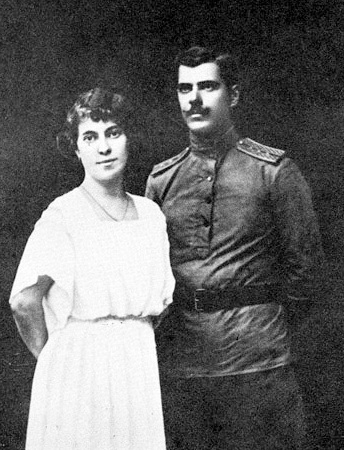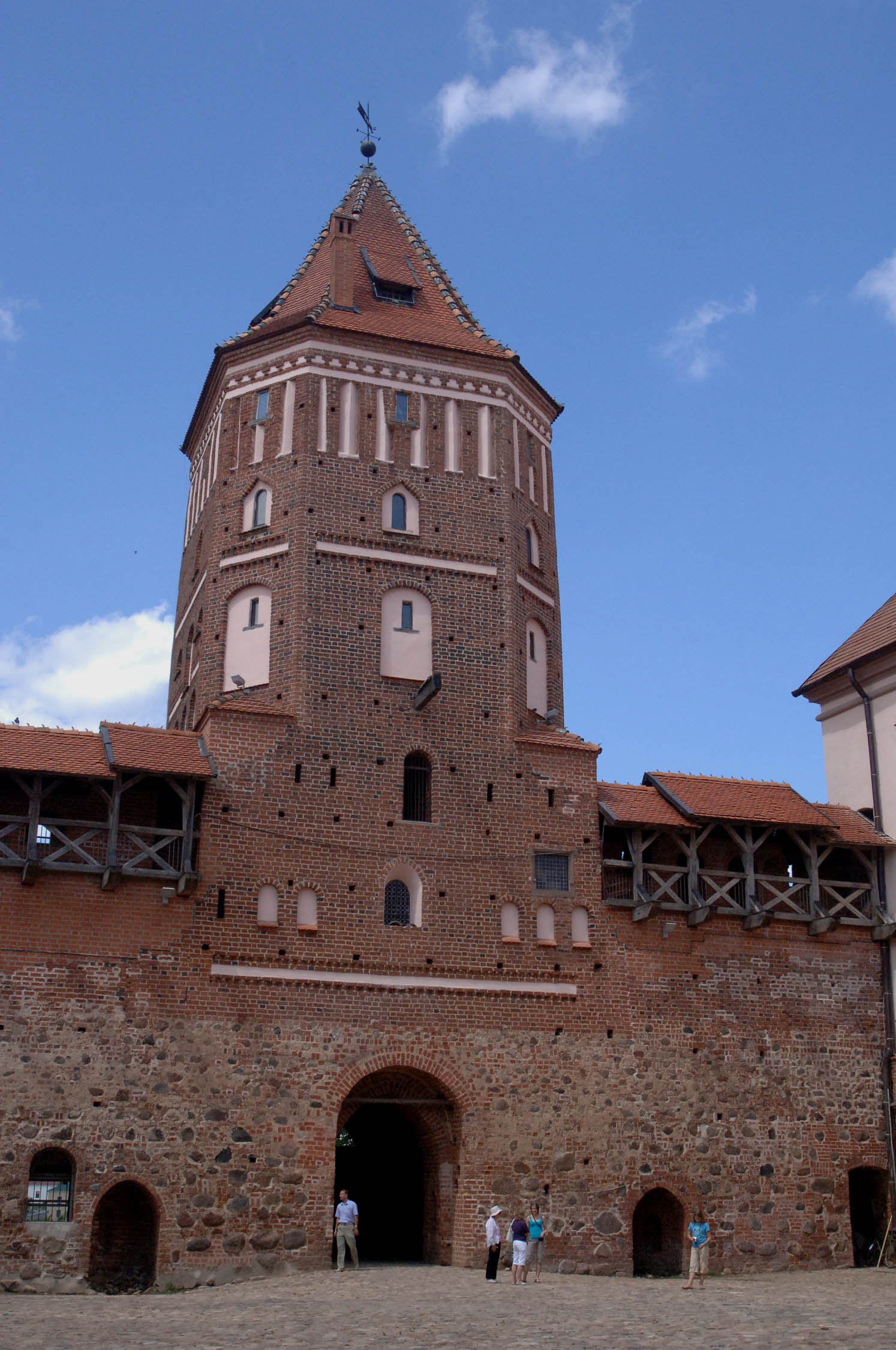|
Halshany Castle
Halshany or Holszany Castle ( be, Гальшанскі замак, lt, Alšėnų pilis, pl, Zamek holszański) is the ruined residence of the Sapieha magnate family in Halshany, Hrodna Voblast, Belarus. It used to be the seat of one of the largest land estates in the Grand Duchy of Lithuania. The current structure was built about 1610 by Paweł Stefan Sapieha to replace an older castle of the Holszanski princely family, of whom Sapiehas were descendants and heirs. Also known as the Black Castle (although it is built of red brick), the residence formerly rivaled Mir Castle as the most elegant private ''château'' of the Grand Duchy of Lithuania. The name ''Black Castle'' in fact originally applies to a fictional building from a book by Uladzimir Karatkievich, which was loosely based on Halshany Castle. The castle and the surrounding estates were devastated, robbed and looted, twice: by the invading Swedes troops during the Deluge (history) and during the Great Northern Wa ... [...More Info...] [...Related Items...] OR: [Wikipedia] [Google] [Baidu] |
Château
A château (; plural: châteaux) is a manor house or residence of the lord of the manor, or a fine country house of nobility or gentry, with or without fortifications, originally, and still most frequently, in French-speaking regions. Nowadays a ''château'' may be any stately residence built in a French style; the term is additionally often used for a winegrower's estate, especially in the Bordeaux region of France. Definition The word château is a French word that has entered the English language, where its meaning is more specific than it is in French. The French word ''château'' denotes buildings as diverse as a medieval fortress, a Renaissance palace and a fine 19th-century country house. Care should therefore be taken when translating the French word ''château'' into English, noting the nature of the building in question. Most French châteaux are "palaces" or fine "country houses" rather than "castles", and for these, the word "château" is appropriate in English. ... [...More Info...] [...Related Items...] OR: [Wikipedia] [Google] [Baidu] |
Ruined Castles In Belarus
Ruins () are the remains of a civilization's architecture. The term refers to formerly intact structures that have fallen into a state of partial or total disrepair over time due to a variety of factors, such as lack of maintenance, deliberate destruction by humans, or uncontrollable destruction by natural phenomena. The most common root causes that yield ruins in their wake are natural disasters, armed conflict, and population decline, with many structures becoming progressively derelict over time due to long-term weathering and scavenging. There are famous ruins all over the world, with notable sites originating from ancient China, the Indus Valley and other regions of ancient India, ancient Iran, ancient Israel and Judea, ancient Iraq, ancient Greece, ancient Egypt, Roman sites throughout the Mediterranean Basin, and Incan and Mayan sites in the Americas. Ruins are of great importance to historians, archaeologists and anthropologists, whether they were once individual forti ... [...More Info...] [...Related Items...] OR: [Wikipedia] [Google] [Baidu] |
Geographical Dictionary Of The Kingdom Of Poland
The Geographical Dictionary of the Kingdom of Poland and other Slavic Countries ( pl, Słownik geograficzny Królestwa Polskiego i innych krajów słowiańskich) is a monumental Polish gazetteer, published 1880–1902 in Warsaw Warsaw ( pl, Warszawa, ), officially the Capital City of Warsaw,, abbreviation: ''m.st. Warszawa'' is the capital and largest city of Poland. The metropolis stands on the River Vistula in east-central Poland, and its population is officia ... by Filip Sulimierski, Bronisław Chlebowski, Władysław Walewski and others. External links Słownik geograficzny Królestwa Polskiego* Alphabetic index DjVu format with a search engineAn index for a DjVu browser Gazetteers Polish encyclopedias Geographic history of Poland History books about Poland 1880 books 19th-century encyclopedias 20th-century encyclopedias {{poland-book-stub ... [...More Info...] [...Related Items...] OR: [Wikipedia] [Google] [Baidu] |
Civil War In Lithuania (1700)
{{disambiguation ...
Lithuanian Civil War may refer to: * Lithuanian Civil War (1381–1384), a war between Jogaila and his uncle Kęstutis with son Vytautas * Lithuanian Civil War (1389–1392), a war between Jogaila and his cousin Vytautas * Lithuanian Civil War (1432–1438), a war between Švitrigaila and Sigismund Kęstutaitis * Lithuanian Civil War (1697–1702), a war between several powerful magnate families See also * Glinski rebellion of 1508 * History of Lithuania (1219–95) The history of Lithuania dates back to settlements founded many thousands of years ago, but the first written record of the name for the country dates back to 1009 AD. Lithuanians, one of the Baltic peoples, later conquered neighboring lands an ... [...More Info...] [...Related Items...] OR: [Wikipedia] [Google] [Baidu] |
Great Northern War
The Great Northern War (1700–1721) was a conflict in which a coalition led by the Tsardom of Russia successfully contested the supremacy of the Swedish Empire in Northern, Central and Eastern Europe. The initial leaders of the anti-Swedish alliance were Peter I of Russia, Frederick IV of Denmark–Norway and Augustus II the Strong of Saxony– Poland–Lithuania. Frederick IV and Augustus II were defeated by Sweden, under Charles XII, and forced out of the alliance in 1700 and 1706 respectively, but rejoined it in 1709 after the defeat of Charles XII at the Battle of Poltava. George I of Great Britain and the Electorate of Hanover joined the coalition in 1714 for Hanover and in 1717 for Britain, and Frederick William I of Brandenburg-Prussia joined it in 1715. Charles XII led the Swedish army. Swedish allies included Holstein-Gottorp, several Polish magnates under Stanislaus I Leszczyński (1704–1710) and Cossacks under the Ukrainian Hetman Ivan Mazepa (1708–17 ... [...More Info...] [...Related Items...] OR: [Wikipedia] [Google] [Baidu] |
Deluge (history)
The Deluge ( pl, potop szwedzki, lt, švedų tvanas) was a series of mid-17th-century military campaigns in the Polish–Lithuanian Commonwealth. In a wider sense it applies to the period between the Khmelnytsky Uprising of 1648 and the Truce of Andrusovo in 1667, thus comprising the Polish theatres of the Russo-Polish War (1654–1667), Russo-Polish and Second Northern Wars. In a stricter sense, the term refers to the Swedish Empire, Swedish invasion and occupation of the Commonwealth as a theatre of the Second Northern War (1655–1660) only; in Poland and Lithuania this period is called the Swedish Deluge ( pl, potop szwedzki, sv, Svenska syndafloden), or less commonly the Russo–Swedish Deluge ( pl, Potop szwedzko-rosyjski) due to the simultaneous Russo-Polish War (1654–1667), Russo-Polish War. The term "deluge" (''potop'' in Polish) was popularized by Henryk Sienkiewicz in his novel ''The Deluge (novel), The Deluge'' (1886). During the wars the Commonwealth lost approx ... [...More Info...] [...Related Items...] OR: [Wikipedia] [Google] [Baidu] |
Swedish People
Swedes ( sv, svenskar) are a North Germanic ethnic group native to the Nordic region, primarily their nation state of Sweden, who share a common ancestry, culture, history and language. They mostly inhabit Sweden and the other Nordic countries, in particular Finland where they are an officially recognized minority, with a substantial diaspora in other countries, especially the United States. Etymology The English term "Swede" has been attested in English since the late 16th century and is of Middle Dutch or Middle Low German origin. In Swedish, the term is ''svensk'', which is from the name of '' svear'' (or Swedes), the people who inhabited Svealand in eastern central Sweden, and were listed as ''Suiones'' in Tacitus' history '' Germania'' from the first century AD. The term is believed to have been derived from the Proto-Indo-European reflexive pronominal root, , as the Latin ''suus''. The word must have meant "one's own (tribesmen)". The same root and original meaning i ... [...More Info...] [...Related Items...] OR: [Wikipedia] [Google] [Baidu] |
Halšany Castle Restoration 2019
Halshany ( be, Гальшáны, lt, Alšėnai or Galšia, russian: Гольшáны, pl, Holszany, yi, אלשאן ''Olshan'') is a village and former town in the Grodno Region of Belarus. It is known as the former seat of the Olshanski princely family and the location of the ruined Halshany Castle. History According to a legend the town was founded by the founder of the Alšėniškiai family of Lithuanian nobility. It was the place of birth of the Lithuanian princess and later the Grand Duchess of Lithuania and queen of Poland Sophia of Halshany, extending Lithuanian Jagellon dynasty over two states. During the times of the Polish–Lithuanian Commonwealth the town was in the hands of the Sapieha family, which constructed a castle there in early 17th century. The town grew smaller with the devastations of the mid-17th century wars wrought in the Commonwealth. The town became part of the Russian Empire with the partitions of Polish–Lithuanian Commonwealth in the 18th ... [...More Info...] [...Related Items...] OR: [Wikipedia] [Google] [Baidu] |
Uladzimir Karatkievich
Uladzimir Karatkievich ( be, Уладзімір Сямёнавіч Караткевіч; russian: link=no, Владимир Семёнович Короткевич) (26 November 1930 – 25 July 1984) was a Belarusian romantic writer. Biography Family and childhood Karatkevich's ancestors were of aristocratic class and came from the Belarusian cities Dnieper, Rogachev, Mstislavl, Mogilev and others. One of the writer's maternal relatives, according to family legend - Thomas Hrynkevich, took part in the uprising of 1863. The rebels under his command were defeated, and he himself was shot in Rahačow. This story Korotkevitch described in the epilogue of the Russian-language novel "Background" (Предыстория), and in the prologue of the novel "Can not forget" ("Leonids will not return to the Earth", «Леониды не вернутся к Земле»). He was born on November 26, 1930, in the city of Orsha, Vitebsk region, into a family of intellectuals. Fath ... [...More Info...] [...Related Items...] OR: [Wikipedia] [Google] [Baidu] |
Mir Castle
The Mir Castle Complex ( be, Мірскі замак, romanized: ''Mirski zamak'', russian: Мирский замок) is historic fortified castle and a UNESCO World Heritage Site in Belarus. It is located in the town of Mir, in the Kareličy District of Hrodna Voblaść, at , north-west of another World Heritage site, Niaśviž Castle. Mir Castle Complex is above sea level. Erected in the 16th century in the late Brick Gothic style, it is one of the few remaining architectural monuments of the former Polish–Lithuanian Commonwealth in contemporary Belarus. History Duke Juryj Ivanavič Illinič ( :pl:Jerzy Iwanowicz Ilinicz) began construction of the castle near the village of Mir after the turn of the 16th century in the Belarusian Gothic style. Five towers surrounded the courtyard of the citadel, the walls of which formed a square of on each side. In 1568, when the Ilyinich dynasty died out, the Mir Castle passed into the hands of Mikalaj Kryštafor "the Orphan" Radzi ... [...More Info...] [...Related Items...] OR: [Wikipedia] [Google] [Baidu] |
Halshany
Halshany ( be, Гальшáны, lt, Alšėnai or Galšia, russian: Гольшáны, pl, Holszany, yi, אלשאן ''Olshan'') is a village and former town in the Grodno Region of Belarus. It is known as the former seat of the Olshanski princely family and the location of the ruined Halshany Castle. History According to a legend the town was founded by the founder of the Alšėniškiai family of Lithuanian nobility. It was the place of birth of the Lithuanian princess and later the Grand Duchess of Lithuania and queen of Poland Sophia of Halshany, extending Lithuanian Jagellon dynasty over two states. During the times of the Polish–Lithuanian Commonwealth the town was in the hands of the Sapieha family, which constructed a castle there in early 17th century. The town grew smaller with the devastations of the mid-17th century wars wrought in the Commonwealth. The town became part of the Russian Empire with the partitions of Polish–Lithuanian Commonwealth in the 18th cent ... [...More Info...] [...Related Items...] OR: [Wikipedia] [Google] [Baidu] |


_in_1655.png)


